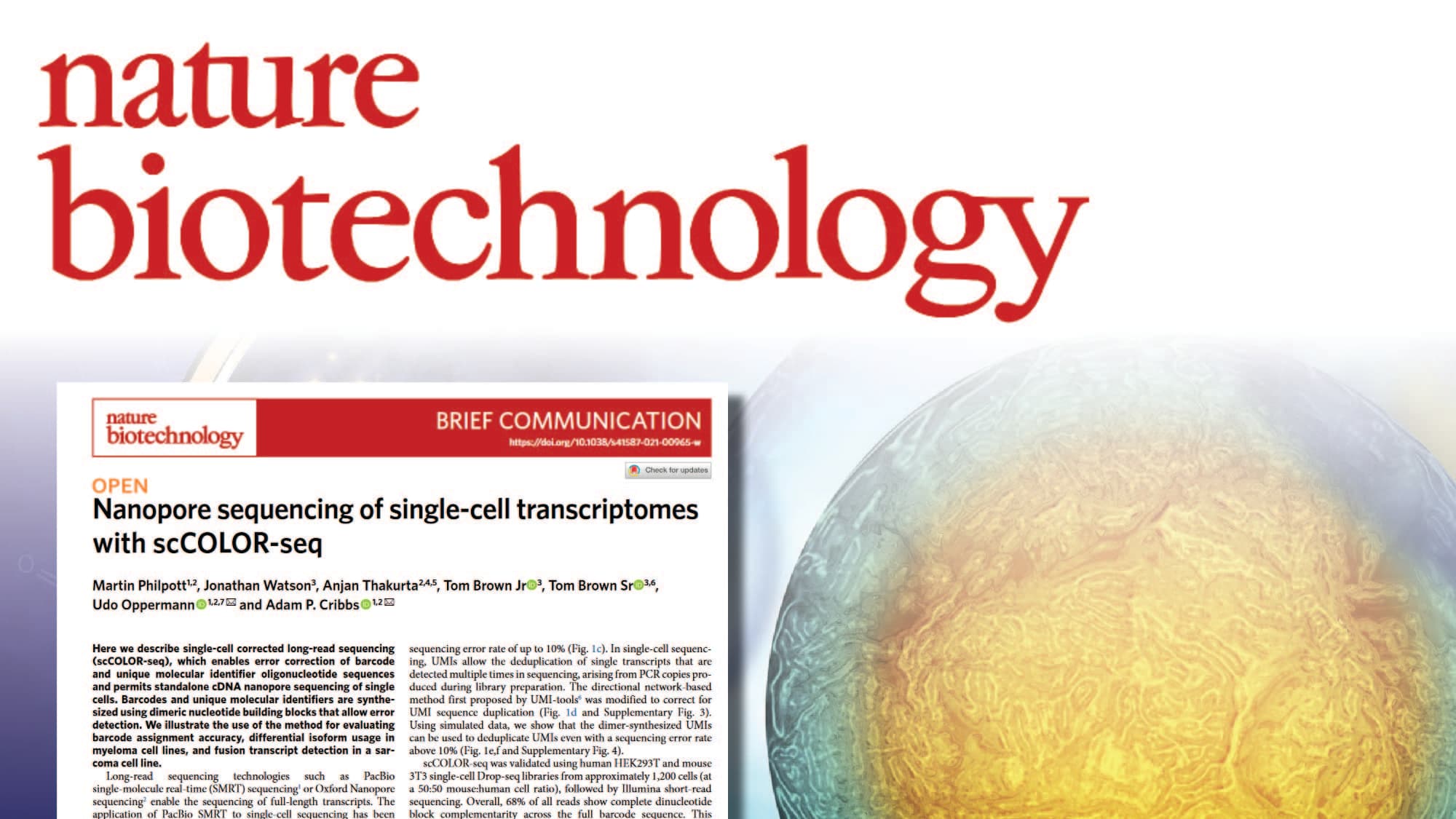
Nature Biotechnology publishes ATDBio & University of Oxford single-cell sequencing research
Research on improved techniques for single cell RNA sequencing by ATDBio, a leader in complex oligonucleotide synthesis, and a research team at the Botnar Research Centre, University of Oxford, has been published in the prestigious journal Nature Biotechnology. The work demonstrates the ability to determine full-length transcriptomes (all the messenger RNA in a cell) via nanopore sequencing at the single cell level. Bringing better understanding of gene expression in normal and diseased tissue, the new approach has significant potential in diagnostics and the understanding of human disease.
Nanopore sequencing of long nucleic acid sequences, while bringing advantages associated with throughput and economy, has a higher error rate than some other methods. The new approach, termed scCOLOR-seq, allows error detection and correction - an absolute requirement for long read sequencing in single cell applications.
ATDBio brought its knowledge of nucleic acid chemistry and expertise in synthesis of complex oligonucleotide beads to the collaboration, working with Dr Adam Cribbs, Dr Martin Philpott and Professor Udo Oppermann at the Botnar Research Centre, University of Oxford. The teams are also working together on related single cell sequencing research funded by Innovate UK, the UK’s Innovation Agency.
Dr Tom Brown Jnr, Chief Scientific Officer of ATDBio, said, 'The new scCOLOR-seq method is the first of many innovations resulting from our collaboration with the Botnar Research Centre team, world leaders in single cell epigenomics. The collaboration has been one of our most interesting and successful, and we are pleased to see our work recognised in Nature Biotechnology. It’s a great example of how ATDBio can apply its expert knowledge of nucleic acid chemistry and complex oligonucleotide synthesis to difficult problems in biology and beyond, together with our corporate and academic partners.'